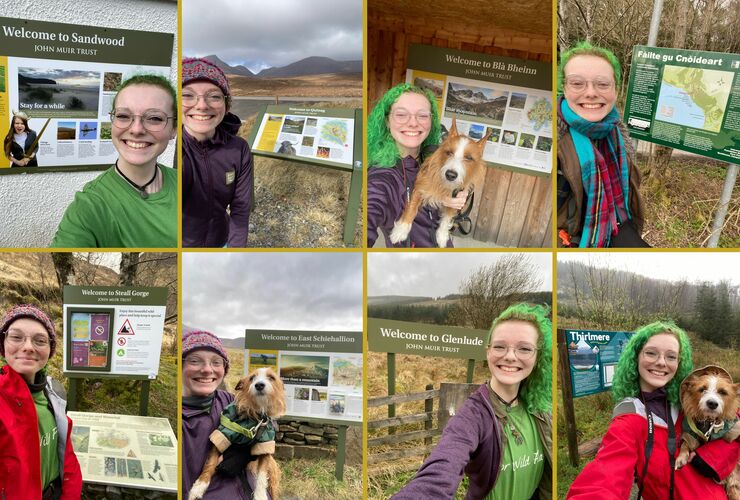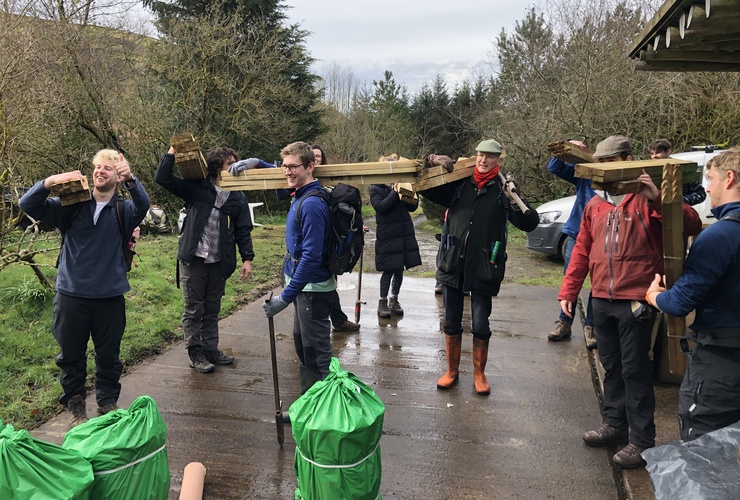Field notes: Five signs of spring to spot
Quinag conservation officer Romany highlights five of her favourite plants and animals to look out for in spring. Have you spotted any?
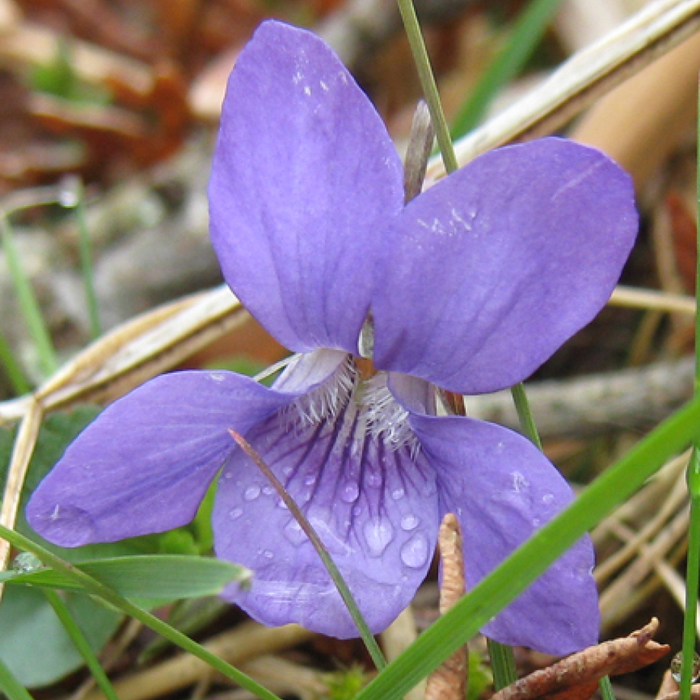
1. Dog violet (Viola riviniana)
After a long winter of browns and greys, common dog violets are an especially welcome sight. Found in grassy banks and verges, watch out for splashes of vibrant purple now flowering. Dog violets can be separated from the other violet species by their hairless or only slightly downy, heart-shaped leaves. They are a scentless perennial and quite widespread. It is worth pausing a moment to enjoy the rich purple of dog violets particularly when mixed among the delicate yellow of primroses.
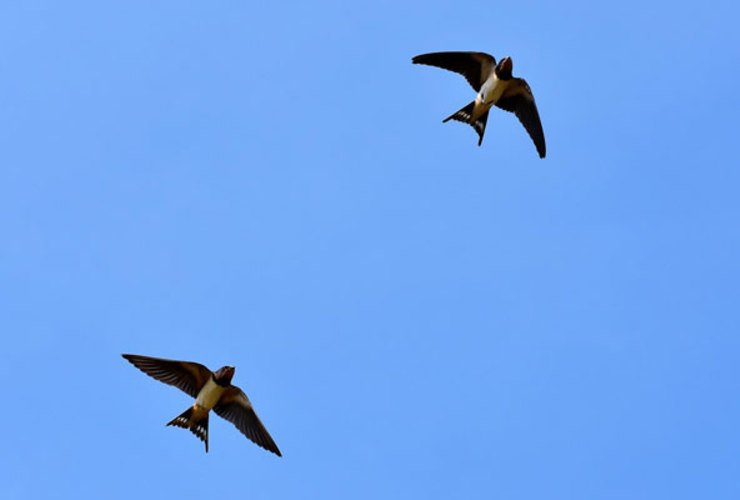 2. Barn swallow (Hirundo rustica)
2. Barn swallow (Hirundo rustica)
It won’t be long now until swallows are back, darting through our neighbourhood. These experts of the sky return from Africa often to the same breeding sites every year. They swoop low feeding on insects while on the wing, often dazzling us with their acrobatics. They are a familiar sight, yet at the same time exotic, with distinctive deep red, a metallic blue and white chest. Their nests are open mud cups often lined with vegetation or wool and appear high in roofs beams or barns. They fly gracefully with forked tail, wire-thin streamers and pointed wings. They constantly twitter to one another and their collective name is a ‘kettle’ of swallows.
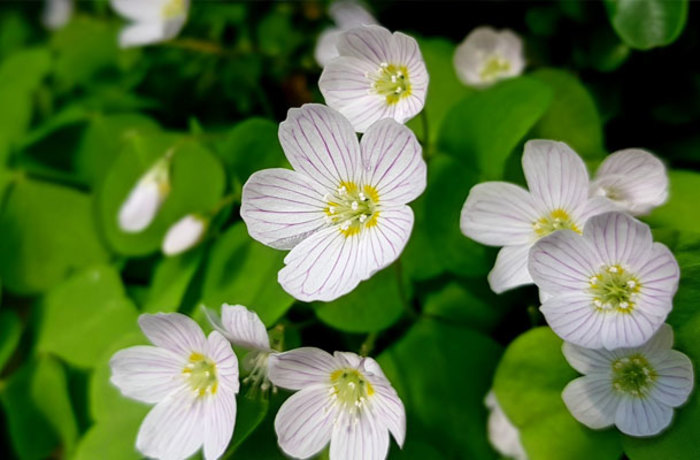 3. Wood sorrel (Oxalis acetosella)
3. Wood sorrel (Oxalis acetosella)
Wood sorrel is also known as ‘candle in the wind’, perhaps due to the nodding cup-shaped flower on the long stalk. These delicate flowers are white with fine pink veins and are found nestled in shaded banks or in the woods. Another name for wood sorrel is ‘cuckoo sorrel’ as it often arrives with the first cuckoo in late April. The pale green leaves are sour tasting and have been used in small quantities in the past to treat heatstroke or fever.
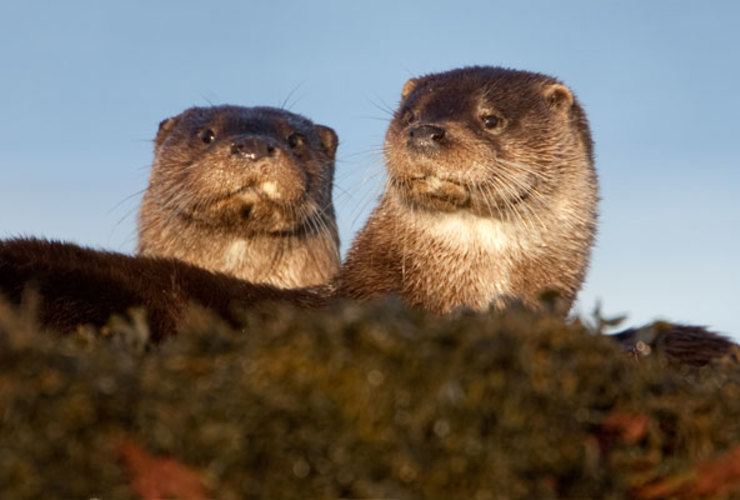 4. Otter (Lutra lutra)
4. Otter (Lutra lutra)
If you are walking alongside a burn or under a bridge look out for an otter spraint or droppings. Otters often use the same places on a grassy mound, ledge or point. Prominent places are used and form an important communication role between otters, sometimes containing hunderds of scents. Otters range over large areas, a female otter can have up to three cubs and rears them alone. The cubs may stay with their mother until they are 16 months old. They eat mostly fish, but also small mammals, birds and rabbits. Regularly used latrines are often pale green due to the high mineral content of years of fish fertilizer from their droppings. Check and see if it has been used recently, if the droppings are dark black and fresh it could be that the visitor is not far away!
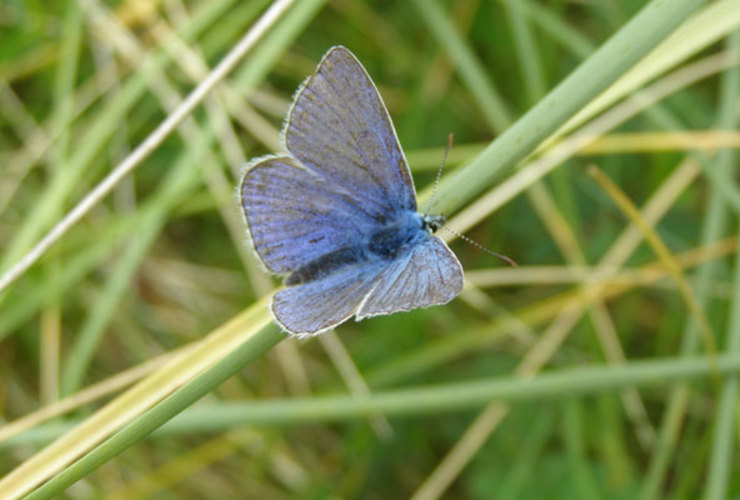
5. Common Blue Butterfly (Polyommatus Icarus)
One of the prettiest sights from May onwards is the common blue butterfly with its electric-blue wings. It is found where there is an abundance of white clover and birds-foot trefoil in grasslands, dunes and open areas. Common blues like to sunbathe and are easily approached if you are careful, especially if it is sunny in the morning. The males are often brighter coloured than the females and are members of the family of blue butterflies called the Lycaenidae. Their underwings have orange flecks and black spots with white surrounds. These fake eyespots are thought to be used to trick predators, deflecting them away from the more crucial part of body. They also have a trace of pale blue hairs on the body.
Sign up for our weekly Wild Inside newsletter for more articles like this
